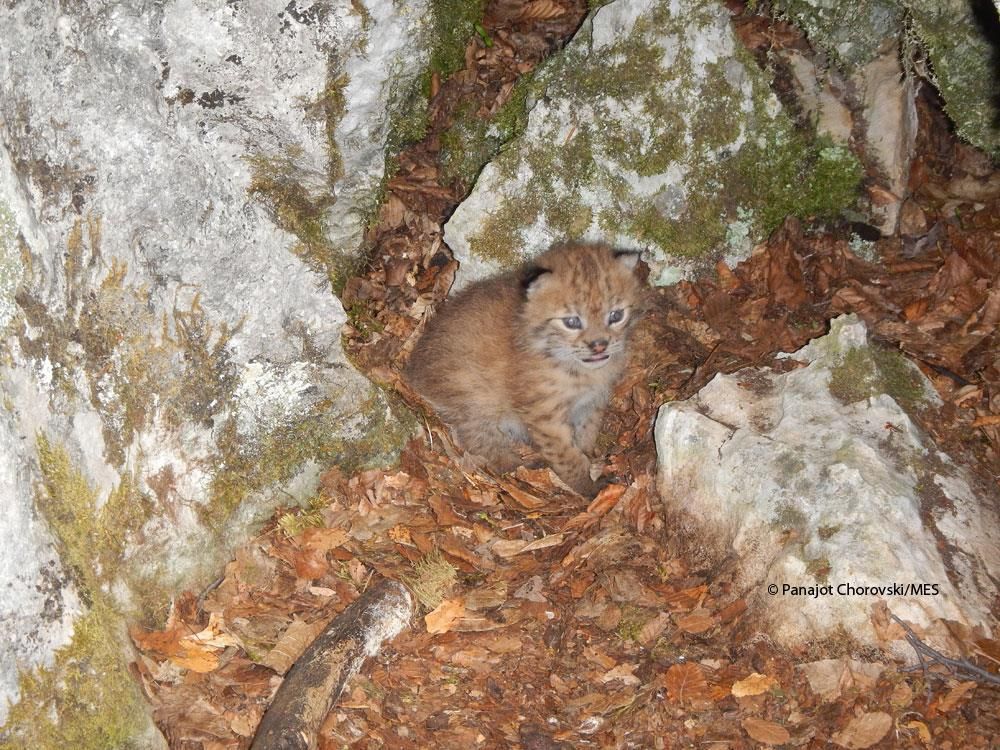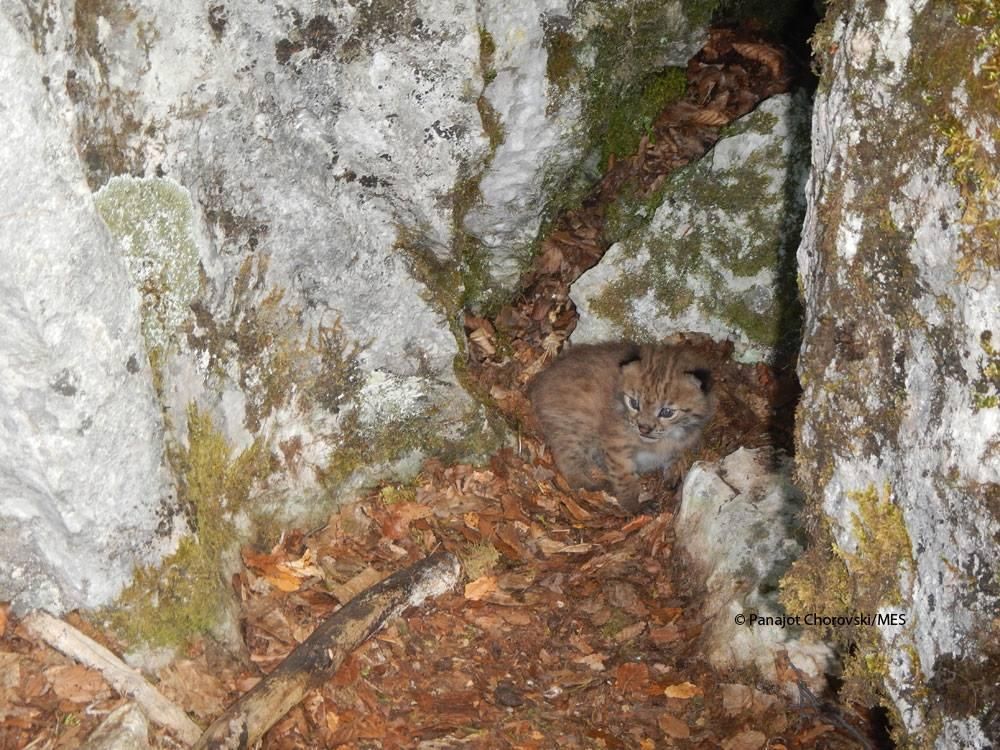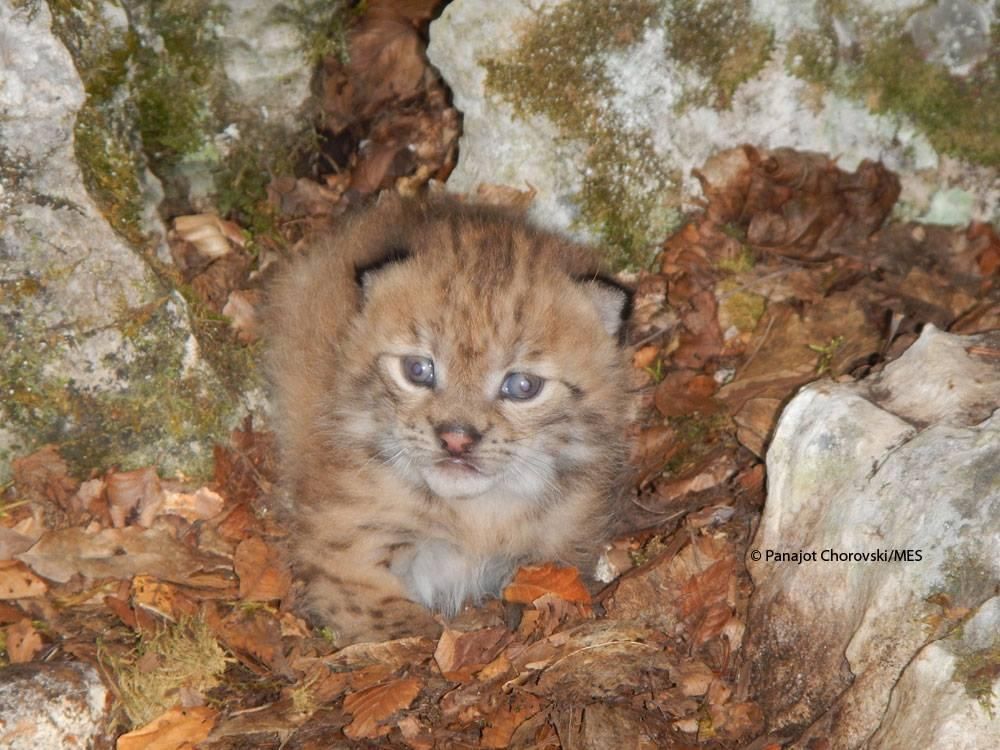Endangered Balkan Lynx Kitten Photographed for the First Time in a Decade
There are less than 50 of these critically endangered cats left in the wild
Earlier this month, researchers in Macedonia discovered and photographed a Balkan lynx kitten, the first newborn from that critically endangered subspecies recorded in a decade, reports Maria Bolevich at New Scientist.
There are only about 50 Balkan lynx left in the mountainous forests of the western Balkans, according to conservation group Euronatur. So in February 2017, Euronatur’s partner group, the Macedonian Ecological Society, put a tracking collar on a female lynx known as Maya to try and learn more about the cat’s range and behavior.
The GPS data led the the group to Maya’s den, located on the edge of Mavrovo National Park, one of only two places the lynx is believed to breed. There, local hunter and long-time project volunteer Panajot Chorovski discovered and photographed Maya's kitten. “It is a great thing to be able to see this baby lynx, hale and hearty,” he told Euronatur.
Lynx numbers have plummeted for many reasons, including habitat loss, hunting and revenge killings by farmers because the lynxes harass their livestock. In fact, two years ago another kitten was found after it was stoned to death by a local shepherd, Bolevich reports. A decade ago researchers weren’t even sure the subspecies still existed, Ksenija Putilin writes for Birdlife International, and it was not added to IUCN Red List of endangered species until 2015.
The Balkan Lynx Recovery Program began in 2006 to collect data and track the animals, writes Putilin. It wasn’t until 2010 that the researchers got a look at an image of a lynx from a camera trap. “One of the most exciting days in my entire life has to be the day we saw the first photo of a lynx from the camera traps,” project member Aleksandar Stojanov tells Putilin. “Can you imagine how it felt… to finally have confirmation that the lynx does live in Macedonia?”
Since then, the camera traps as well as data from local hunters has helped the team estimate the number of animals, their range and the fact that they are likely breeding in Mavrovo National Park and Albania’s Munela mountains.
The image of the cub is great news, Bolevich writes, but it does not mean the species has a viable breeding population. Only about a quarter of lynx kittens survive to adulthood, facing problems including disease, lack of food and busy roads. And the cats stomping grounds, between Macedonia and Albania, faces threats from logging, road-building, over-hunting, and hydropower development.
Researchers hope the kitten can help spur local awareness of the cats and maybe draw in some ecotourism. “There is a long way to go before the future of these landscapes and their biodiversity are secure,” John Durrus Linnell at the Norwegian Institute for Nature Research, a partner in the lynx recovery program tells Bolevich. “But images like these remind us that as long as there is life, there is hope—and that is what keeps conservationists’ motivation up.”
There are signs that the campaign to save the lynx is gaining traction. The European Bank for Reconstruction and Development recently refused funding for a proposed dam inside Mavrovo National Park because it would have impacted the lynx and other wildlife. That will likely prevent the project from moving forward.
According to Bolevich, researchers will outfit the kitten with its own GPS collar when and if it reaches ten months of age.


